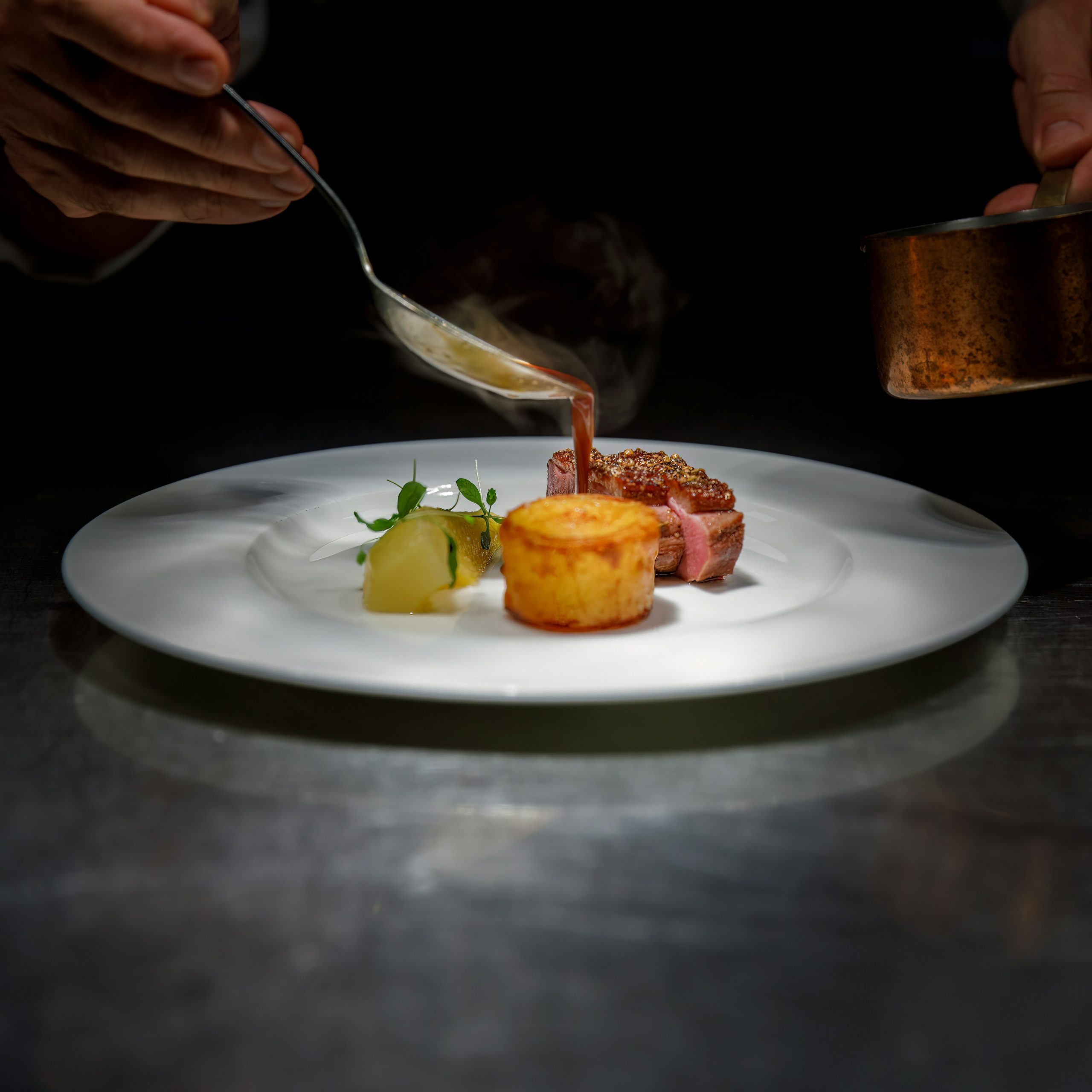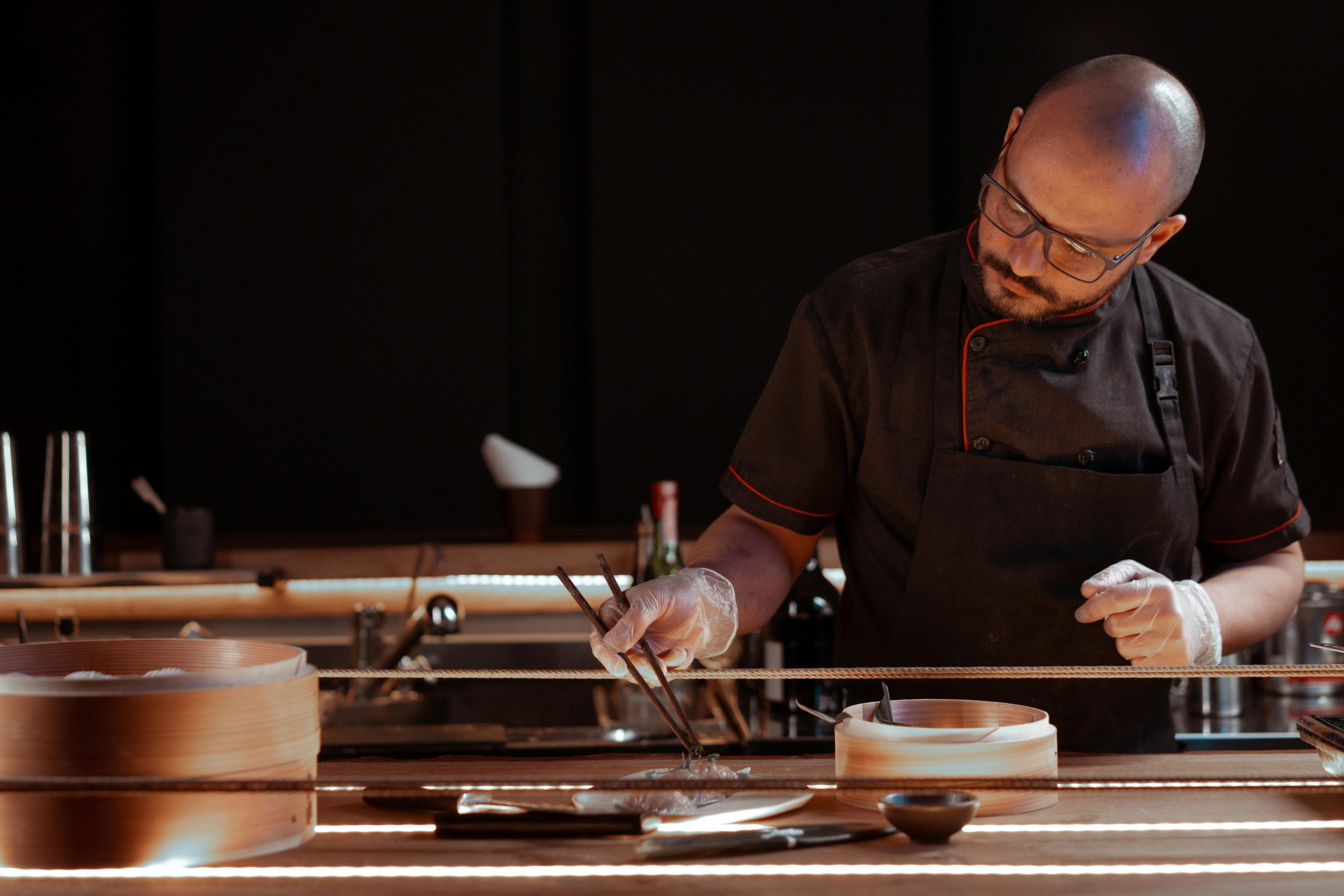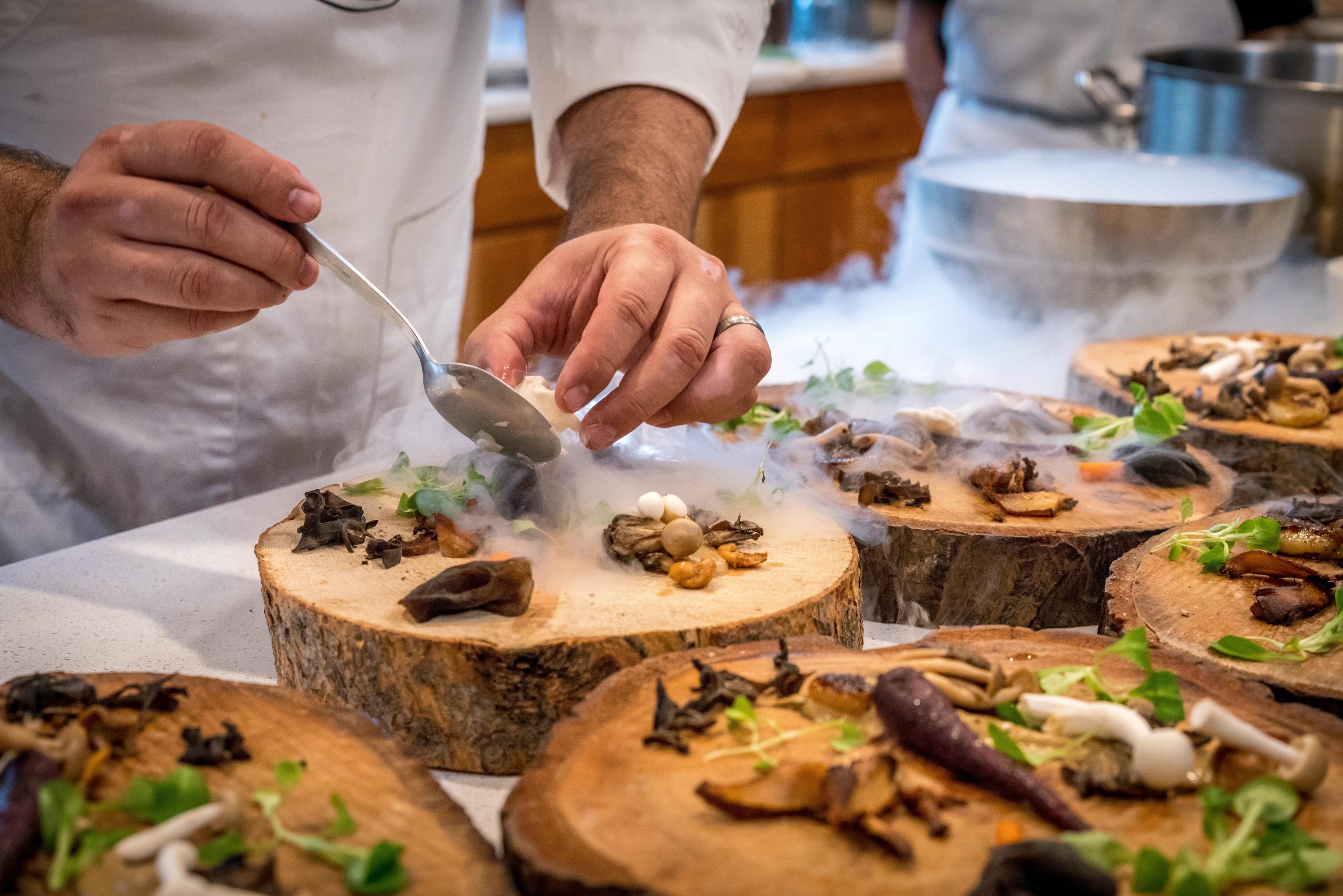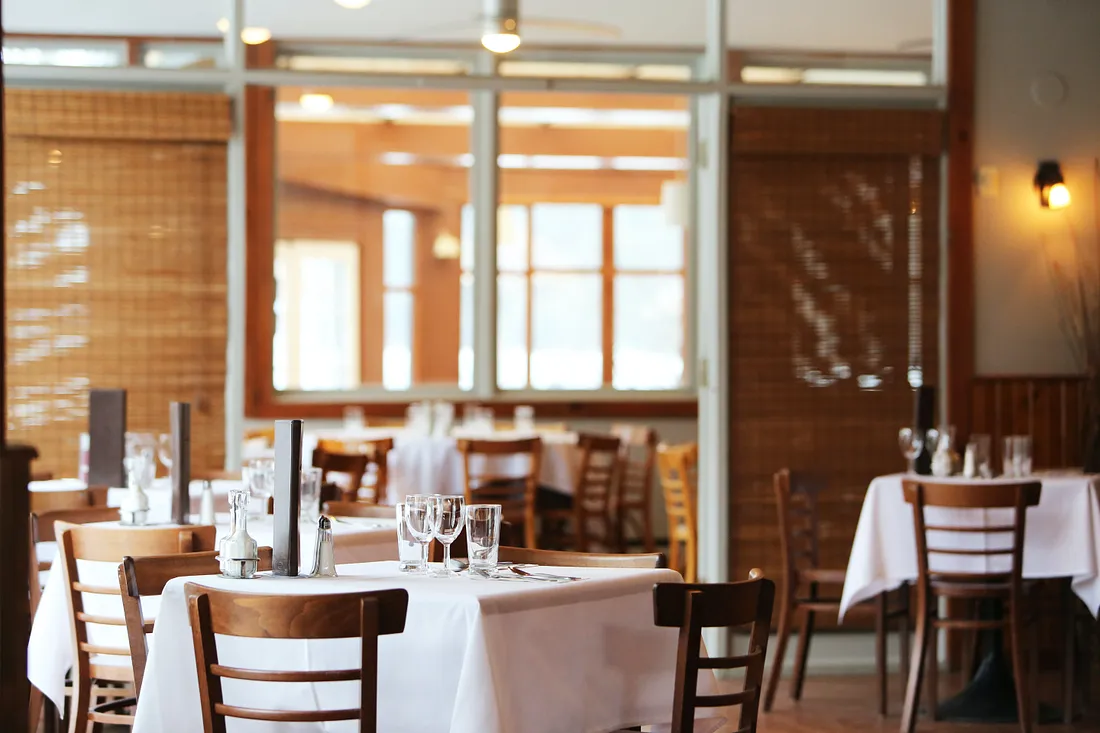Michelin Restaurants You Can’t Miss
One of life's greatest pleasures is enjoying a good dish, and even more so when it's a new gastronomic experience. For any traveler, gastronomy is one of the main reasons for traveling. According to a study conducted by the digital travel agency Booking, 88% of travelers state that one of their main motivations when choosing a destination is tasting local cuisine. Therefore, I wanted to create a list to share the best cities with Michelin-starred restaurants, as this distinction guarantees an explosion of flavors and culinary authenticity. While it's true that traveling doesn't necessarily mean doing it in a group, solo trips are also ideal for spontaneous getaways, moments of reflection, or even self-discovery. If you enjoy traveling alone and have Singapore on your list of destinations, you can't miss Burnt Ends. The experience begins the moment you enter the restaurant, which boasts a vibrant and sophisticated atmosphere. With one Michelin star, Burnt Ends offers an open kitchen where you can appreciate the cooking process of the dishes, with meat being their main specialty. If you're a wine lover, they have an interesting wine list. On the other hand, if you find yourself in the city that never sleeps, New York, Le
Why Japan and Colombia Should Be on Every Food Lover’s List 2024
Tourist destinations not only offer entertainment and an immersion into different cultures but also represent an opportunity to explore and enjoy local cuisine. As Confucius said, "To know how to eat is to know how to live," and on these journeys, you never stop learning
The Current Dilemmas of the Gastronomic Sector
In the vast world of gastronomy, where flavors intertwine with experiences and opportunities, a challenging panorama emerges. From the influence of new policies to changing trends in consumption and the effects of climate change, enthusiasts in this sector must do more than just be prepared; they must adapt to consider new innovations that allow them to thrive amid constantly evolving challenges. Impact of Healthy Taxes and Single-Use Plastic In some countries, rather than merely requesting, the implementation of measures to promote sustainability, such as regulation on single-use plastic, has been demanded. This has led to a series of financial adjustments in the gastronomic sector, especially in countries like Colombia. Although these measures aim to promote more environmentally friendly practices, the reality is that even the smallest changes can have a significant impact on the operating costs of establishments. Faced with this panorama, entrepreneurs face the challenge of balancing the adoption of these measures with profitability, while also maintaining attractive prices for consumers. It is essential to develop strategies that allow compliance with regulations for a greener future, without compromising the economic viability of businesses. The Rise of Conscious Eating The current consumer trend has undergone a significant change, and the gastronomic sector is no
Artificial Intelligence in the Kitchen: How It’s Changing the Future of Gastronomy
The future of gastronomy is being transformed by artificial intelligence (AI), a change that manifests in multiple ways. From haute cuisine to fast-food restaurants, AI is reshaping how we prepare and experience food. Innovation in Haute Cuisine: Renowned chefs, like Andoni Luis Aduriz of Mugaritz restaurant, are employing AI to create new flavor and texture combinations. Thanks to machine learning algorithms, it's possible to explore unprecedented combinations that enrich gastronomy with innovations and unparalleled culinary experiences. Efficiency in fast cooking: The automation of processes and customization of menu recommendations through self-service kiosks are just a few examples of how AI is enhancing efficiency in fast-food restaurants. Supply chain management and food traceability are also key areas where AI is making a difference, ensuring quality and reducing waste. Cutting-edge cooking techniques: AI has enabled the implementation of advanced techniques like sous vide and low-temperature vacuum cooking. These methods allow for cooking food at precise temperatures, guaranteeing consistent results and intense flavors. Additionally, AI-powered kitchen robots are assisting in complex tasks, facilitating chefs' experimentation with innovative flavors and textures. Personalization of the gastronomic experience: AI is enabling unprecedented customization in the culinary experience. From menus tailored to individual dietary preferences and needs to facial recognition of
Trends in gastronomy in 2024: flavors of the future
For 2024, the gastronomy industry is envisioned as a culinary journey filled with exciting innovations and discoveries. From revolutionary techniques to exotic ingredients, the culinary scene is undergoing a remarkable transformation. Therefore, I am pleased to offer a detailed analysis of the trends that will shape the pace of taste preferences during this period. The rise of eco-friendly gastronomy Environmental awareness has permeated every aspect of our existence, and gastronomy is not exempt from this trend. In 2024, there is a noticeable increase in the demand for sustainable food options and the adoption of environmentally friendly culinary practices. According to the EcoCuisine gastronomic trends report, 78% of consumers are actively seeking restaurants that integrate eco-friendly practices. The revolution of alternative foods With a growing focus on health and ethics, alternative food options are experiencing a significant increase in popularity. According to data from the World Alternative Food Association, it is projected that sales of vegetarian and vegan products will represent approximately 20% of the global food market by the year 2024. Furthermore, Mintel research indicates that 65% of consumers are willing to try options that replace traditional meat. Culinary technology The way we prepare and enjoy food is being transformed by technology. From artificial intelligence-powered kitchen robots to
New Year Experiences Around the World
As the year comes to a close, we can't help but reflect on the unique experiences that New Year brings in different parts of the world. Traveling during these times is more than just a celebration; it's a reminder of the cultural diversity that enriches our lives. From the dazzling lights in Sydney to the serene reflection in Kyoto, every corner of the globe contributes its uniqueness to this global festivity. Sydney, Australia: luminous display on the Harbour Bridge In vibrant Sydney, Australia, the arrival of the New Year is celebrated with a display of fireworks over the iconic Harbour Bridge and Opera House. This event attracts millions of spectators who gather to witness an unparalleled light show. The question that arises is simple yet intriguing: How can the city make the sky even more impressive than it already is? Rio de Janeiro, Brazil: party on the sands of Copacabana Our next destination takes us to the golden beaches of Rio de Janeiro. Brazil, famous for its carnival, doesn't fall short on New Year. On Copacabana Beach, millions of people gather to participate in a feast of music, dance, and offerings, marking the beginning of a new cycle with an explosion of energy that
The Growing Demand for Vegan Options in the Gastronomy Industry
At the crossroads of culinary innovation and evolving consumer preferences, the gastronomy industry finds itself in an unprecedented transformation. In this article, I am pleased to address the growing demand for vegan options, a phenomenon that extends beyond being a passing trend and solidifies itself as an essential element for the future of the sector. According to a report by EMR Expert Reports, the vegan food sector recorded a significant value, surpassing $24.59 billion in 2022. Projections indicate steady growth, with an estimated CAGR of 10.1% between 2023 and 2028. It is anticipated that by 2028, this market will have exceeded $43.8 billion, showcasing sustained momentum in the preference for such food options. Similarly, data from Research and Markets confirms this trend, revealing that the vegan food market reached a value of over $37.93 billion in 2022, projecting robust growth with the expectation of reaching over $71.26 billion by the year 2030. With that said, the growth of vegan cuisine in the gastronomy industry is driven by several factors, including the rise in awareness of healthy diets, growing concerns about sustainability and the environment, as well as the integration of technological advances in food, that have led to the development of plant-based alternatives
What gastronomic trends are emerging in the luxury sector?
Although the economic landscape has been uncertain, the luxury goods and experiences industry has made significant progress in 2022, with further expansion expected in the coming years despite economic turbulence. These findings come from the 21st edition of the Bain & Company-Altagamma Luxury Study, a collaboration between Bain & Company and Fondazione Altagamma, the trade association of Italian luxury goods manufacturers. The global luxury market analyzed by Bain & Company encompasses both luxury goods and experiences. It comprises nine segments, led by luxury cars, luxury hospitality, and personal luxury goods, which together account for over 80% of the total market. After a severe contraction in 2020 due to the Covid-19 pandemic, the market rebounded to €1.15 trillion in 2021 and surprised everyone in 2022 by growing between 19% and 21%, according to estimates. With this solid database and projections, let's now explore the main gastronomic trends that are shaping the luxury sector. From a focus on vegan products to the appreciation of rare and exotic ingredients, we will discover how these latest trends are captivating the most discerning palates and transforming the culinary experience in the world of luxury. The Vegan Revolution in Fine Dining In response to growing environmental awareness and concern for
High steaks: Wagyu beef market continues to grow
Wagyu beef is growing in popularity and there are few signs of it slowing. In 2021, the global Wagyu market was worth more than $11 billion. This was a banner year as Japan exported around 8,000 tons of the gourmet beef cut. Now, the global market is expected to grow by a compound annual growth rate of 6 percent–making it worth an estimated $16 billion by 2028. The food industry is being impacted by inflation, supply chain issues, and climate change, but Wagyu appears to be weathering the storm. From steak to high-priced burgers, the revered protein is becoming more commonly consumed. Here are the factors driving Wagyu’s popularity: The luxury hospitality sector Known for its tenderness and buttery, umami flavor, Wagyu has been a fine-dining favorite since the 2010s–when Japan lifted its export ban to the United States and European countries. Luxury establishments like restaurants and hotels are still fueling the Wagyu beef market today. While some lucky customers can find Wagyu in high-end grocery and specialty stores, the market is sustained by a business-to-business model–particularly with fine dining. A large majority, 85 percent, of Wagyu sales are B2B. As a testament to the importance of B2B commerce, it’s not uncommon for a Wagyu brand to partner with luxury
Consumers no longer dishing out on food and drink
Over the past year, the Consumer Price Index has risen 6 percent, with the highest peak at 9.1 percent in June last year–the biggest increase since November 1981. Consumers are feeling the brunt of inflation prices, and it is particularly impacting eating out and drinking habits. According to a recent Morning Consult report, more than half of Americans say they’re changing the ways they eat and drink due to inflation. Restaurants continue to take a hit Restaurants face myriad challenges from supply chain shortages, double-digit food inflation, wage increases and higher operating costs, to name a few. And it is no surprise that to keep their doors open, they are raising prices for consumers. But, as consumers look to save their pennies in the current economy, restaurants appear to be the first to get cut. According to the same Morning Consult report, all generations and income levels are equally likely to eat out less to reduce spending over other behaviors. This trend doesn’t just stop at dining in. Americans are also ordering less takeout and fewer restaurant deliveries. This also holds for previously to-go-loving millennials. In 2021, 49 percent of this generation reported dining out at least once a week. In 2023, that number dropped to 40 percent. The










